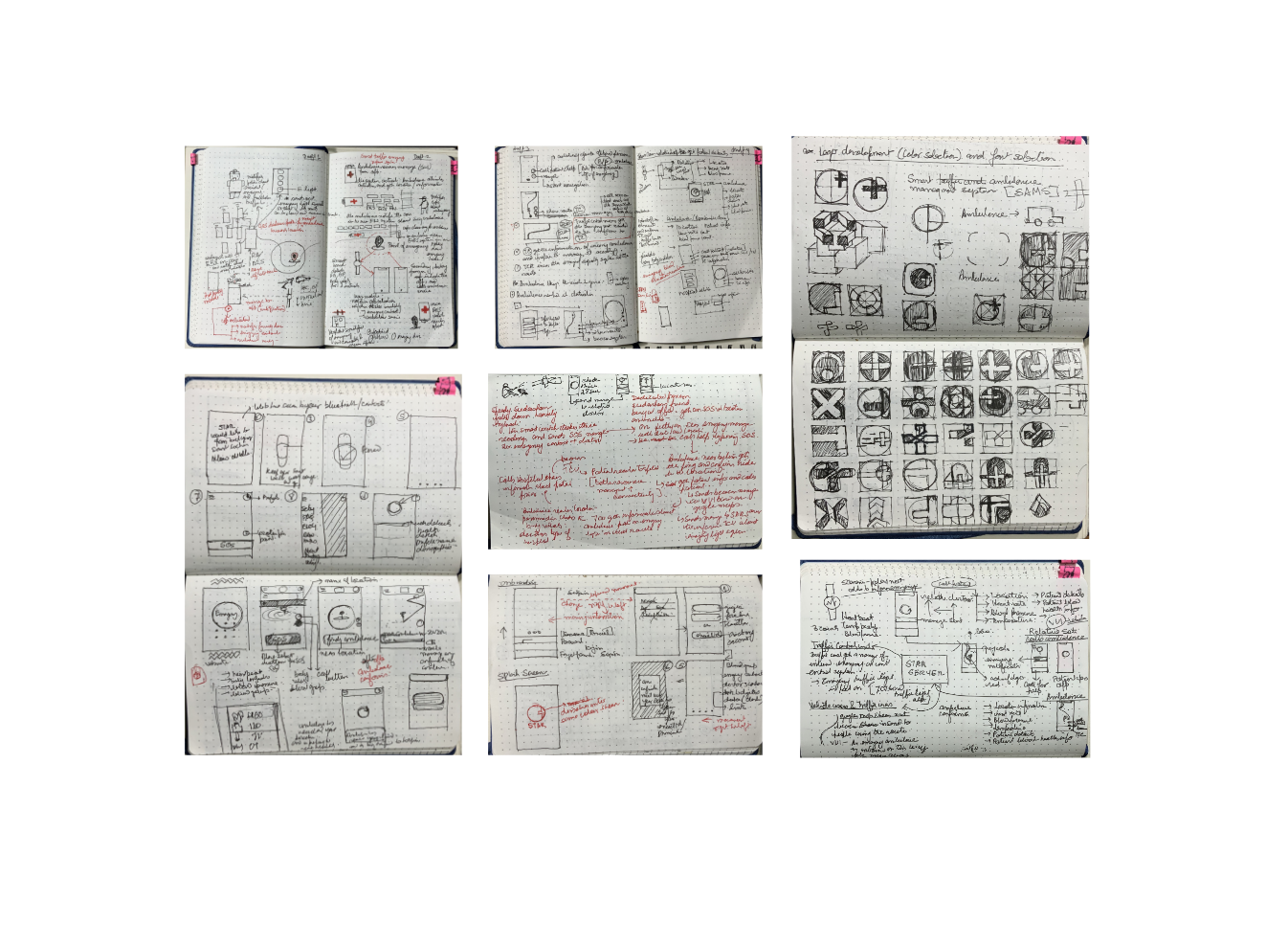
SAMS Research - Design Research on Emergency Response System
Course
Design Project - Fourth Semester
Interaction Design | System Design Research
Duration
4 weeks
Overview
As we go on with our lives be it pre COVID era or post , medical emergencies may emerge to anybody at any time. Emergency ambulance services are integral in providing a service for those with unplanned urgent health emergencies. So this project is an attempt at looking at such services to reduce the friction between stakeholders
The Process
This part of the project focuses on Discovering and Defining the problem revolving around Health Emergency Systems
Discover
Understanding the Indian Emergency Management System ( EMS)
What is the present scenario ?
Why is this a priority ?
Research Triggers
Health Emergency Ecosystem
Understanding the key players and actions of the emergency ecosystem
Stakeholders
Devices used
Major Emergency Ambulance Services avaialble
What surveys tell us ?
Survey form was circulated to understand what people thought and their views on health emergency systems. All data derived are from an email survey conducted with 35 participants , ranging from 23 to 52 years. This helped to narrow down my primary research participants and give a direction to understand their motivations and behaviors ?
Primary Research
I took a qualitative approach to understand and identify the problems while using the existing systems. The research was divided into :-
1. Hypothetical task observation - To understand how users responded during an hypothetical emergency situation
2. One to one interviews - To understand the motivations , behaviors and though process during emergency situation.
1. Hypothetical task observation - Task contains a series of decision making cards to simulate the situation for the users decision making process during emergency within a certain time period
2. Interview Responses
Insights
On analyzing the collected data points from the primary and secondary research , I performed an affinity map to derive themes and clustered them to generate working insights
Define
Defining Personas
After analyzing the collected data points from the primary and secondary research and developing the insights I came up with the two personas defining their characteristics, painpoints and motivations
Persona 1
Scenario with Speedy Roadster - He is on his way to one of his solo adventures , he has left his home around 3.00 pm in the evening and hopes to be back by 2 days.
Persona 2
Scenario with Restless Rohini - She is restless about her pregnancy and is with her mom and dad, she is trying to have dinner at around 10.00 pm and is in a lot of pain.
Understanding High level goals of users
To have a platform that assist users to mitigate varied emergency situations.
To have system that merges patients and healthcare system without any friction
To have a centralized system that prioritizes life saving over other scenarios
The Brief
“To design a centralized ambulance management system that connects various stakeholders and resources, and help victims/patients to get medical assistance, efficiently thereby prioritizing life saving.”
How Might We
Crazy 8s
Once the How might We questions were formed, I used Crazy 8 method of ideation to brainstorm on each HMW for 8 minutes and 2 minutes of thinking on the same. Two rounds of Crazy 8s were conducted to help me diverge and brainstorm better.
HMW build an smart assistive platform
HMW connect patients , paramedics , drivers to family / friends.
HMW ensure control of health to patients and caregivers.
HMW ensure centralized one stop platform for all emergency needs.
Design
Design Ideation
Once I formed the HMWs , I tried brainstorming and started coming up with initial concepts and ideas.
Concept Sketches




































